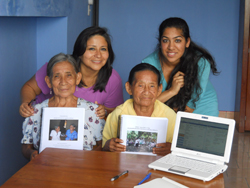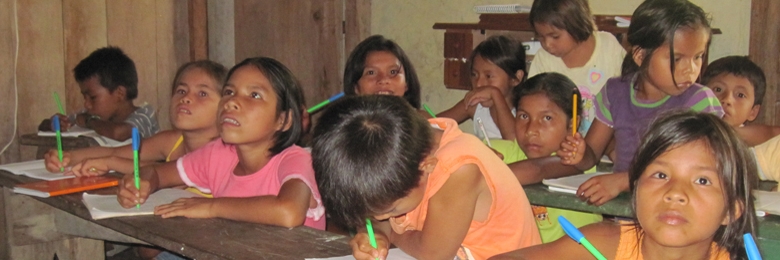
Over the past five years, Professor Pilar Valenzuela has led a project to document the endangered Kawapanan languages of Peru. Her work includes a trilingual dictionary (Shiwilu-English-Spanish), video and audio tapes containing different types of Shiwilu and Shawi texts that have been processed to varying degrees, the description of certain phonological and grammatical features of Kawapanan (especially Shiwilu). The project has been primarily funded by the National Science Foundation (DEL 0853281).
Shiwilu (a.k.a. Jebero (jeb)) and Shawi (a.k.a. Chayahuita (cbt)) are the extant members of the little-known Kawapanan family of languages from northeastern Peru.
Shwilu is a severely endangered language, with only approximately 30 fluent speakers left, whose ages range from 57 to over 90 years old. All of the speakers are bilingual in Spanish with most concentrated in the town of Jeberos and neighboring villages (Jeberos District, Alto Amazonas Province, Loreto Department). A younger generation, approximately 40 years of age and older, includes a few passive speakers. Shiwilu has not been passed on to children for several decades, and thus younger community members do not speak or understand their ethnic language at all.
For the Shiwilu, their language is an undisputable mark of their distinct identity that most wish to preserve. This ethno-linguistic documentation aims to help them strengthen their ethnic identity and pride, which may in turn have an impact on their status and rights as indigenous people (e.g., bilingual education and territorial rights). Also, the development of a practical orthography and other resources may help them carry out revitalization efforts more effectively.
In contrast to the critical position of Shiwilu, Shawi is a very vital language. It is the main means of communication of the approximately 20,000 members of the respective ethnic group, and it continues being acquired by children. Most Shawi live in some 180 “comunidades nativas,” on the banks of the Cahuapanas, Cachiyacu, Paranapuras, and Sillay rivers. There is also a Shawi population along other tributaries of the Huallaga and Marañón rivers.
